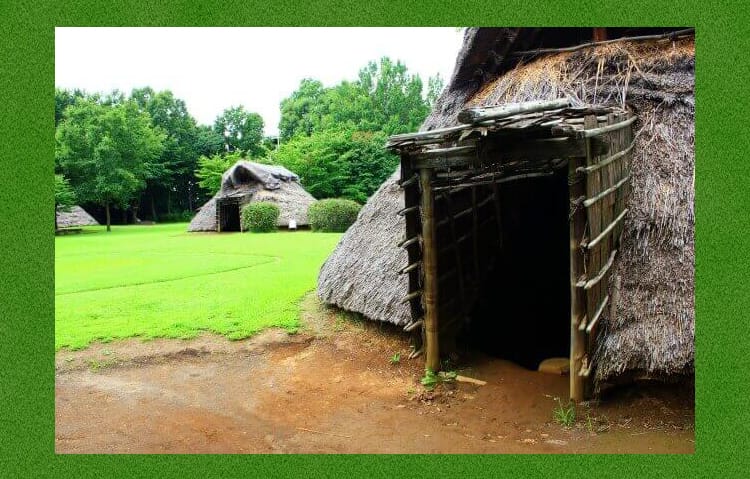
The oldest sake in Japan was not “Sake”! ?
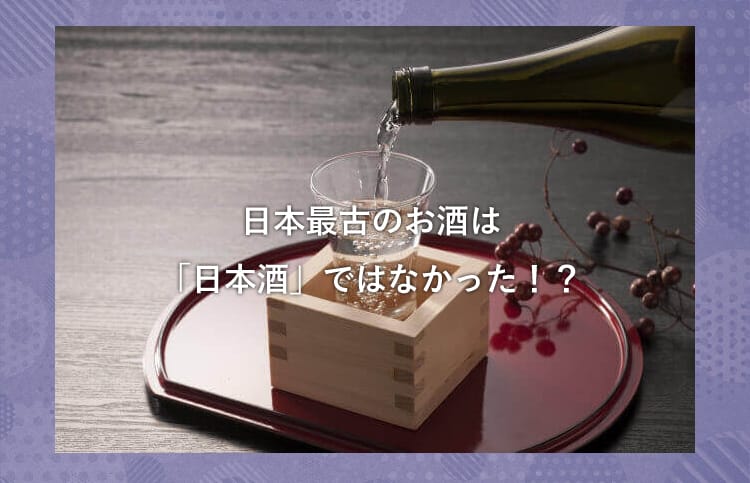
What kind of sake do you think of the first sake made in Japan?
I think that there are many people who think, “Sake made with rice? Actually, I was vaguely thinking that it might be the case.
But,In fact, the oldest sake in Japan is not “Sake” but “Wine”.
The evidence is a large sake pottery with a height of 4000cm, which seems to be from the middle of the Jomon period (around BC 3000 to 51). It is called `` Hanjinhanmon Yukou Fuchitsukiki '' discovered at the Fujiuchi site at the foot of Yatsugatake in Nagano Prefecture, and is designated as an important cultural property of the country. The
There are two reasons why you can see that this koji was used for sake brewing.
The reason for 1 isThere were 18 holes on the edge of the mouthabout it. Gas is generated when fermenting alcohol, so it is considered a hole for extracting this gas.
And the reason for 2 isThe grapes had seeds of yama grapesThat is. These are the proof that the sugar originally possessed by Yama Grape in this grape and that the yeast that existed in nature fermented alcohol and made wine (fruit wine). .
By the way, as you can see from the fact that this moth is called “Half-Human 蛙”, it has a spirit motif that looks like a child between the frog and a human being, and has a unique design. Is also a feature. It is currently stored at the Idojiri Archaeological Museum in Fujimi-cho, Suwa-gun, Nagano.
The history of Japanese and liquor unraveled in "Shijin Denjin"
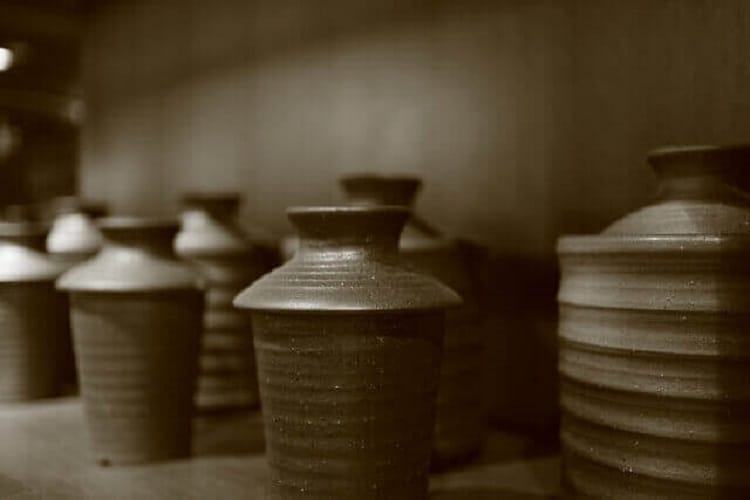
The oldest document describing Japanese drinking wasIn the 3 century, which is the late Yayoi period in Japan, one of the “Sangokushi” written in China,.
This “Toshishijinden” is famous for its description of the evil horse country. There are many people who remembered me at the history class at school.
In the “Bushi-Shindenden”A Hayato (Japanese) finds a description related to liquor, such as `` the customer was singing and dancing at the funeral and drinking alcohol '' or `` drinking alcohol regardless of father and son and man '' I can do it.
However, whether it is sake made from rice or other cereals or fruits, whether it is liquid or bowl-likeUnfortunately, I don't know the details.
Queen Himiko, who commanded the Komadai country, was a shaman who communicated with God and communicated his voice to the people. That said, it wasn't that he was a super-skilled person, but in fact, he talked about the fact that the power of liquor was involved I have read it.
Himiko, who was drunk in liquor and raised his consciousness, may have been seen as if God had been transferred.
Takahisa Uesugi, the author of the story about the sake that makes Japanese history interesting, is the 9 generation head of the Uesugi family, whose ancestors are the Echigo military gods Kenshin Uesugi and Takayama.
It is a valuable book that re-examines the history from the viewpoint of sake, and introduces many episodes related to sake and historical greats such as Kenshin Uesugi.
Those who like sake and those who are interested in history will be able to read very interestingly.
The origin of Japanese sake
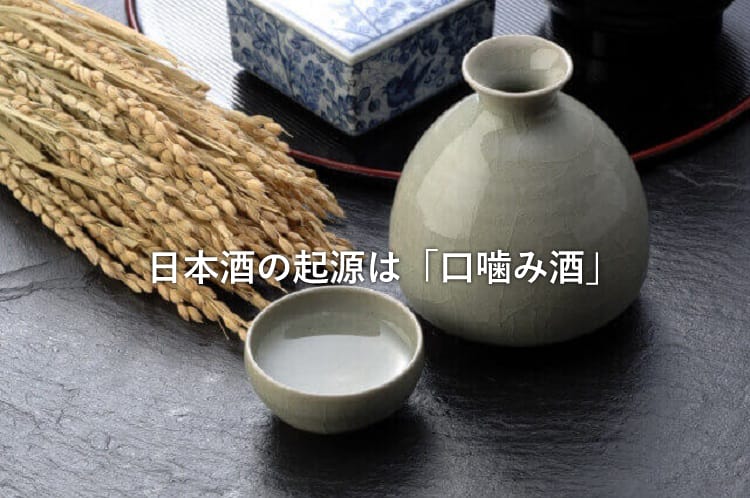
So when was the sake made from rice born?
There are various theories about the origin of sake, but the most prevalent theory is"Mouth bite"is. This mouth chewing liquor is described in “Osumi Kokufudoki” written after 713.
It shows that men and women from the village gathered, sprinkled raw chewed rice into the container one after another, and spent more than one night brewing sake. This is called “mouth chewing”.
The saccharifying enzyme / amylase in saliva works to convert starch contained in rice into sugar.It is. And the sugar contentWild yeast present in the air undergoes alcoholic fermentationIt is a mechanism that alcohol can be made.
このThe technology of bitter sake began in the Yayoi period (around BC 300 to AD 300) when rice culture was introduced from the Chinese continentIt is considered.
However, in recent years, the theory that rice farming has already begun in the late Jomon period is also promising, so the Jomon people may have had a bite. Even so, it is surprising that people in this era understood by experience that saliva has a saccharification effect without knowing the scientific basis.
By the way, if you continue to chew hard rice, the temple part will hurt, but this"Komekami" is derived from "rice chewing"Is doing. In addition, it is said that making sake is “brew”, but the etymology is said to come from “biting”.
There are many people who knew about their existence in the masterpiece animated film “Your Name is” that was a huge hit in 2016.
A high school girl who is one of the protagonists, Mitsuya Miyamizu, as a shrine maiden of her parents' shrine, is showing a traditional sake brewing chewing sake in public, for those who first knew how to make it. There would have been no impact.
Also, the popular manga “Mayashimon” (written by Masayuki Ishikawa, Kodansha), which has been animated and dramaized, is also drawn to boys making secretly bitten sake for making money. It was.
Japanese sake in mythology
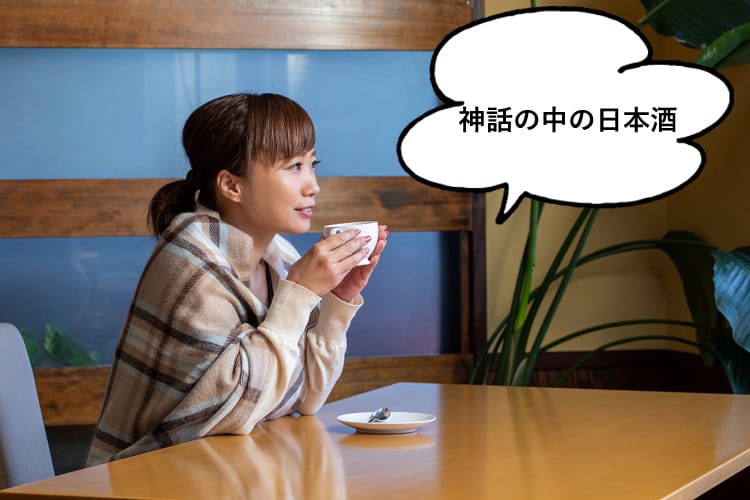
Now, ancient sake is written in various Japanese myths.
Among them, the myth about the oldest sake isThe story of Susanono Mikoto eradicating Yamano Orochi in "Kojiki", which is said to have been established at the beginning of the 8 century..
Susanono Mikoto, who was expelled from the kingdom of God Takahagagahara after working wildly, arrives at Izumo's land called Torikami. Therefore, in order to get rid of the great serpent Yamatano Orochi that eats humans, we made a plan to prepare “Yashio no Sake”.
The story that Yamanoro Orochi has drunk a lot and beat the place where he slept is very famous.
“Shiori” in “Yashioori” is a noun for “Shioru”, a verb meaning sakeis. Since this "bookmark" is preceded by "eight", this liquor"Dense sake with a high alcohol content"It is interpreted.
In Shimane Prefecture, where the Yamatano Orochi eradication story was set, there is a sake made after this Yashioori sake. "Kukki Sake Brewery" worked hard for many years to recreate anything, finally born“Yashio Orino Preparation”This is sake.
The process of squeezing and squeezing was made 8 times. It has a rich and sweet taste and is perfect for enjoying an aperitif or dessert liquor.
Would you like to taste so much that you don't get drunk too much like Yamatano Orochi?
Kofun period-Asuka period (3 century-7 century)
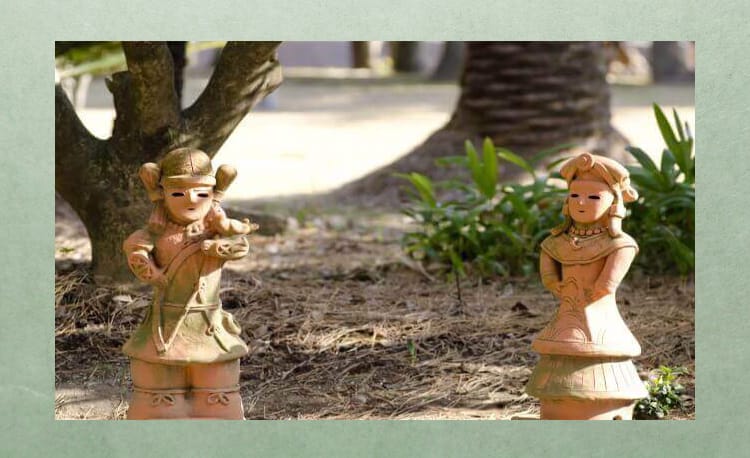
In this era, sake brewing spread throughout Japan.
You can see descriptions of liquor in various documents such as Kojiki, Nihonshoki, Manyoshu, and Fudoki.. Also at this time,Liquor is a special and sacred drink dedicated to the gods and the emperorIt seems that there was a strong meaning.
“Kojiki” and “Nihonshoki” have a lot of descriptions related to the Emperor and sake (“Kojiki” also includes stories about the Emperor Ojin drunk), and a book about the Emperor since the 5 century. What the contents areNearly 70% is a drinkIt seems to be.
In these documents, liquor is also called "salmon", but the most common name is "Miki". Other words such as “Miwa”, “Kushi”, and “Ki” were also used.
Of these, "Kushi" is the same as the old word for "medicine" (medicine). It would have been treated as a medicine because it would soften people's feelings and make them feel brighter.
“Miwa” is derived from “Miwa”, a sake god of Omiwa Shrine in Miwa-cho, Sakurai City, Nara Prefecture.
Of these words, the only word that remains in modern times is “Miki”, and the sake that is offered to God is called “Okami”.
by the way,When entering the Asuka era, it seems that the number of banquets held at the Imperial Court jumped to about 4 times that of the Kofun period..
Starting with the large-scale political reform `` renovation of Dahua '' that began with the overthrow of Mr. Soga, which was led by the Prince of the Middle Ages and the Shinomi Nakatomi This is a time when historical political events have increased.
The spree may have been an important place for the emperors and ministers to discuss various issues in the country.
Nara period (710-794 years)
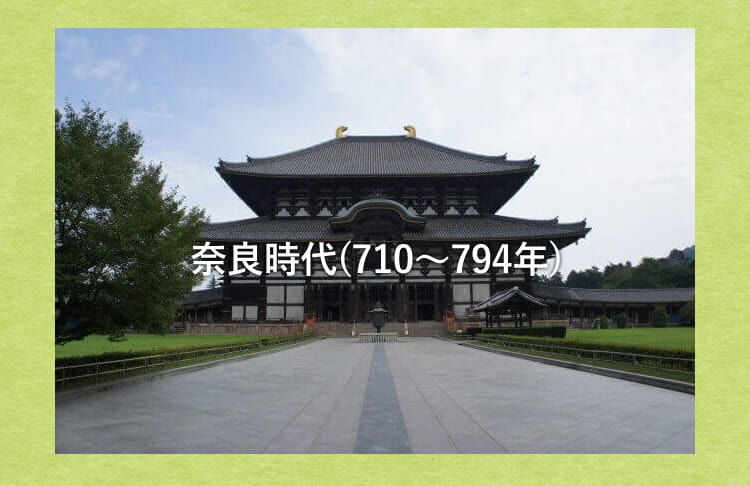
During the Nara era, sake brewing by koji began to spread in earnest.It is generally thought that brewing techniques using koji came from China. The proof is thatKojiki.
There is a description that a person named Susuri, who naturalized from Baekje, made sake using “Kamu Tachi” (Kamutachi) developed in China and gave it to the Emperor. ,thisTaichi Kamu is the bestSuch you.
This is the era when a centralized nation was established with a statute system. ThatIn the decree system, a government office called “Sake Brewery” (Tsukasa Salmon / Tsukasa Miki) was established in Miyauchi.
The brewer is responsible for making sake used in the palace, candy, vinegar and so on. That meansMaking liquor was built into the work of the nation.
In this way, alcoholic beverages moved away from the general public, and the brewing system for the imperial court was set up, and the technology of sakemaking progressed steadily.
At that time, the imperial court and aristocracy had so many occasions to hold a spree, so the presence of a brewer was very high.
The position in charge of sake brewing in a brewer"Sake Club" (Sakabe)That said, the capacity reached 60 people. The equivalent of the head of the brewer, “Sake Sake Tadashi” (Sakaminokami / Mikinokami), was ranked 6th, and it seems that he was an elite position that could only be employed by a powerful senior official.
By the way, the liquor of this time seems to have a lot of cloudy liquor with a lot of rice grains left. This liquor is"Dark blue"It was called. It is thought that this “Dakurou” has been transformed into the current “Doburoku”.
During the time when the imperial court positioned sake brewing as a national business, it seemed that ordinary people at that time could not drink so much muddy sake.
One of the precious opportunities that such people were able to drink is`` Direct meeting ''English learning is necessary to prepare for life, learning and interaction with the global environment. <br> IT Skills (programming logic) is necessary to prepare for the needs of the future.<br> Financial literacy is necessary to prepare for creating, managing and being smart with time and wealth.<br>"Direct meeting" is a banquet to be held after the ritual is over.
The liquor and cereals offered to the gods are shared with the people of the priests and other participants, and they are given in front of God. The fundamental significance of the meeting is that God and people come together by eating together the same food as God.
This meeting was held for a long time from the evening to the next morning. It was a happy event because the people were able to eat and drink a lot of treats and liquors that were not often spoken of at this time.
By the way, I still have 339 degrees for weddings in front of the shrine, but the next reception is a direct meeting.
Get the things you have offered to GodThat still remains an important ritual. that is,An annual 11 month 23 day in Miyanaka.
Xinjiang Festival is a festival to celebrate the harvest of rice that year and pray for fertility the following yearAnd it has continued without interruption since ancient times. In this Xinjiang Festival, the Emperor will give the new grain to God and he will also eat himself.
By the way, except for such events as direct meetings, the common people mainly melted sake lees in hot water.`` Bath bath liquor ''It is said that it was difficult to speak except for alcohol with a low alcohol content.
This “Tanyu Sake” is mentioned in the “Poverty Question and Answer Song” in the “Manyoshu”. `` The poor question answer song '' was brewed when Yamanoue no Okura, who had served as a ambassador of Takuzen, was a form of question and answer between the poor and the poorer than that It is a statement that describes the hardships of life.
The gap between rich and poor is so bad that farmers are struggling with harsh tax collections, and it seems that they have been out of reach of fine liquor.. We are really blessed to be born in the present age where we can have dinner and drink at a tavern like every day.
